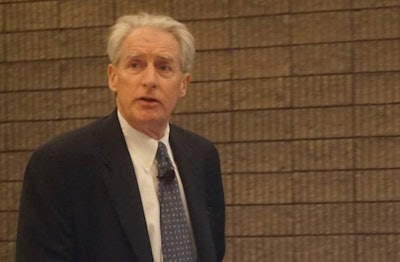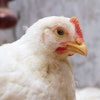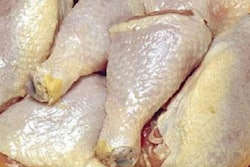
During a presentation at the 2016 IPPE in Atlanta, Mike Donohue, vice president of Agri Stats Inc., said data collected by the agricultural research company indicated 46.1 percent of chickens Agri Stats monitors were not fed antibiotics traditionally used for growth promotion within the past month. Some of the birds he referred to were treated with other classes of drugs. Ionophores, a class of coccidiostats that also have antibacterial activity and are classified by the US Department of Agriculture as antibiotics, do not have growth promoting claims, but may have been used in some of these flocks.
Donohue said the reduction in the use of antibiotics in the U.S. may also be correlated with a reversal in the productivity gains the poultry industry has enjoyed consistently for decades. Consumer concern over the use of antimicrobials in livestock production and the forthcoming U.S. Food and Drug Administration’s Veterinary Feed Directive, which will ban the use of growth promoting antibiotics the FDA deems medically important to humans in the U.S., were hot topics at last week’s convention.
There are some antibiotics available for use in U.S. poultry flocks that have growth promotion claims that are not currently classified as medically important.
Over the past two to three years, Donohue has noticed steady improvement in key metrics – livability, field cost, condemnation, rate of gain and feed conversion – has stopped or started to reverse.
“It’s a slight decrease but I think a big part of that goes back to … antibiotic free and all its permutations,” Donohue said.
Donohue said he noticed the amount of birds not fed antibiotics increasing during the past 15 to 18 months. While it could be part of a normal medication rotation program, he said the trend is worth monitoring over the long term.
As the use of antibiotics continues to be reduced, Donohue said U.S. farmers will be challenged to manage the health of their flocks.
“As we see fewer tools being used that were traditionally helpful in bird health programs, I think that’s a big part of what’s gone on in not gaining the growth rate,” Donohue said. “I do think that eventually we’ll get to another plateau.”
See all the latest IPPE news.


















